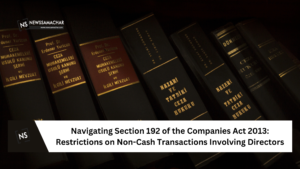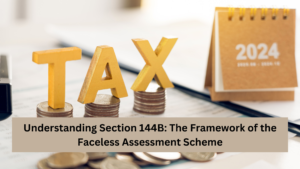
Business Failure Bankruptcy Financial Crisis Recession Concept
Section 53 of the Insolvency and Bankruptcy Code (IBC) outlines the distribution of assets upon the liquidation of a company. This provision is crucial in determining the priority of claims, ensuring a structured and fair distribution among creditors. Understanding the intricacies of this section is essential for stakeholders involved in insolvency proceedings, including creditors, debtors, and professionals in the field of insolvency resolution.
The Structure of Section 53
Section 53 lays down a specific order of priority for the distribution of assets in a liquidation process. This hierarchy ensures that the claims of various creditors and stakeholders are addressed in a systematic manner. The order of priority is as follows:
- Insolvency Resolution Process Costs and Liquidation Costs: The first charge on the liquidation assets is the insolvency resolution process costs and liquidation costs. These include fees of the resolution professional, costs incurred during the corporate insolvency resolution process (CIRP), and other expenses necessary for the liquidation process. Prioritizing these costs ensures that the professionals involved are compensated and the process can be conducted smoothly.
- Secured Creditors and Workmen’s Dues: The next in line are the workmen’s dues for the period of 24 months preceding the liquidation commencement date and debts owed to secured creditors. If secured creditors relinquish their security interest, they fall into this category. This provision reflects a balanced approach, protecting the rights of both workmen and secured creditors.
- Employee Dues: Following the secured creditors and workmen’s dues, any remaining dues owed to employees (other than workmen) for the period of 12 months preceding the liquidation commencement date are given priority. This ensures that the employees, who are integral to the company’s operations, are fairly compensated for their contributions.
- Unsecured Creditors: Next in the hierarchy are the dues of unsecured creditors. This group includes trade creditors, suppliers, and other general creditors who do not hold any security against the assets of the company. The inclusion of unsecured creditors in this order reflects an attempt to address the interests of a broader group of stakeholders.
- Government Dues and Remaining Secured Creditors: Dues owed to the central and state governments for the period of two years preceding the liquidation commencement date come next. Additionally, any remaining debts of secured creditors after realizing their security are included in this category. This step ensures that governmental dues are considered, while also addressing the balance of claims for secured creditors.
- Any Remaining Debts and Dues: Any debts and dues that do not fall into the above categories are addressed next. This catch-all provision ensures that all possible claims are considered, albeit with lower priority compared to the earlier categories.
- Preference Shareholders: The dues to preference shareholders are given priority before addressing the claims of equity shareholders. Preference shareholders have a preferential right over the equity shareholders in terms of dividends and capital repayment.
- Equity Shareholders: Finally, any remaining assets are distributed among the equity shareholders of the company. Equity shareholders are the residual claimants and stand at the end of the line in terms of priority.
Also Read:
1. Section 144B
2. Section 50 of the CGST Act 2017
The Rationale Behind the Priority Order
The priority order established by Section 53 is designed to balance the interests of various stakeholders involved in the liquidation process. This order is not arbitrary but rooted in the principle of fairness and the need to maintain trust in the insolvency process. By prioritizing the costs associated with the insolvency resolution and liquidation process, the Code ensures that the mechanisms for resolving insolvencies remain functional and professionals are adequately compensated.
Secured creditors and workmen are given high priority to protect their specific interests. Secured creditors, having lent money against collateral, are provided a safety net to recover their dues. Simultaneously, the dues of workmen, who are often among the most vulnerable stakeholders, are given precedence to safeguard their livelihood.
Unsecured creditors, while not holding any security, represent a significant portion of a company’s liabilities. Their inclusion in the mid-tier of the priority order reflects an attempt to balance the need for repayment with the available assets.
Government dues and remaining secured creditors follow, recognizing the need for companies to fulfill their obligations to the state and addressing any residual secured debts. The final steps in the priority order address the claims of preference and equity shareholders, recognizing their residual interest in the company’s assets.
Practical Implications and Challenges

The implementation of Section 53 can be complex, requiring careful assessment and verification of claims. Liquidators play a crucial role in ensuring that the distribution of assets adheres to the prescribed order of priority. Accurate record-keeping and transparent communication with creditors are essential to avoid disputes and ensure a fair distribution process.
One of the practical challenges is the determination and settlement of insolvency resolution process costs and liquidation costs. These costs can be substantial, and their prioritization can significantly impact the remaining assets available for distribution. Furthermore, verifying the dues of workmen and employees, particularly in large organizations, can be time-consuming and requires meticulous documentation.
The treatment of secured creditors also presents challenges, particularly in cases where the value of the secured assets is insufficient to cover the debts. In such scenarios, secured creditors may have residual claims as unsecured creditors, complicating the distribution process.
Unsecured creditors, given their lower priority, often face significant challenges in recovering their dues. The limited availability of assets after settling higher-priority claims can result in substantial losses for this group. This underscores the importance of prudent risk assessment and credit management practices for unsecured creditors.
Also Read:
1. Section 192 of the Companies Act 2013
Conclusion
Section 53 of the Insolvency and Bankruptcy Code plays a pivotal role in the liquidation process, providing a clear and structured framework for the distribution of assets. By establishing a priority order, it seeks to balance the interests of various stakeholders, ensuring a fair and transparent process. While the practical implementation of this section can present challenges, the underlying principles aim to maintain trust and integrity in the insolvency resolution process.
Understanding Section 53 is crucial for all stakeholders involved in insolvency proceedings. For creditors, it provides clarity on the likely recovery from the liquidation process. For debtors, it underscores the importance of compliance with statutory obligations. For professionals in the field, it offers a structured approach to managing the complex dynamics of asset distribution during liquidation.







